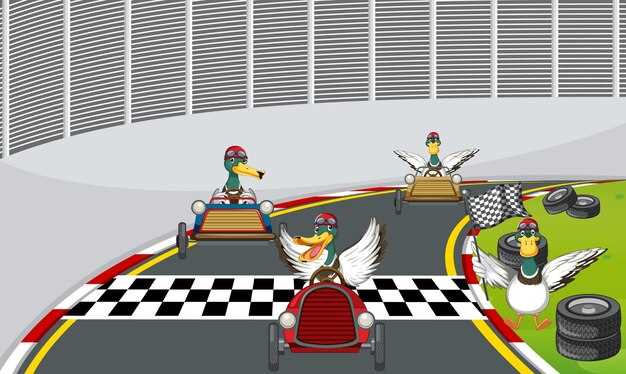
The world of drag racing is a captivating blend of speed, adrenaline, and a vibrant subculture that has evolved over decades. Understanding its history offers insights into how this electrifying sport emerged and transformed into a significant part of automotive culture. With roots tracing back to the mid-20th century, drag racing began as a rebellious expression of youth and a showcase for engineering ingenuity.
In the early days, fans of speed would gather in vacant lots or on deserted stretches of road to test the limits of their vehicles in head-to-head competition. This informal practice laid the groundwork for organized events, which soon attracted attention from car manufacturers and sponsors alike. As more enthusiasts became involved, a community formed around the shared passion for drag racing, solidifying its place in American motorsport history.
The history of early drag racing is not just about the competition; it reflects a broader cultural movement that embodies the spirit of freedom and rebellion. It is a manifestation of the post-war automotive boom, where the excitement of the open road intersected with burgeoning youth culture. Through detailed exploration of its origins, we uncover how this thrilling sport galvanized a generation and continues to influence countless racing disciplines today.
The Impact of the 1960s Car Culture on Drag Racing
The 1960s marked a transformative period for car culture in America, significantly influencing the evolution of drag racing. This decade witnessed a surge in automobile production, with manufacturers rolling out increasingly powerful models that appealed to a burgeoning youth culture. The introduction of muscle cars such as the Ford Mustang, Chevrolet Camaro, and Pontiac GTO not only changed consumer preferences but also became integral to the drag racing scene.
The rise of the 60s car culture was fueled by the desire for speed and competition among young car enthusiasts. Drag racing became a popular outlet for this adrenaline rush, often taking place on deserted streets or makeshift tracks. The excitement of racing these high-performance vehicles attracted spectators and created a vibrant community devoted to the sport. Car clubs and informal racing leagues formed, establishing a grassroots network that propelled the drag racing scene into the spotlight.
During this era, the culture surrounding drag racing was also shaped by influential figures and events. Notable races, such as the National Hot Rod Association (NHRA) events, gained prominence, showcasing the growing popularity of drag racing. The emergence of professional drag racing championships solidified the sport’s legitimacy and appeal, further intertwining it with the broader car culture of the 60s.
The 1960s also saw advancements in automotive technology, allowing drag racers to modify their cars for increased performance. Modifications such as improved engines, lighter frames, and specialized tires transformed the drag racing experience, leading to more competitive and exhilarating races. The pursuit of speed became a hallmark of the decade, fueling innovations that would define the sport for years to come.
In summary, the 1960s car culture played a pivotal role in shaping drag racing. The era’s fascination with powerful cars, the rise of competitive racing communities, and technological advancements all contributed to the sport’s growth and popularity. This foundational period laid the groundwork for the drag racing culture we know today, highlighting the lasting impact of the 60s on American motorsports.
Key Figures and Innovators in Early Drag Racing

The emergence of drag racing in the late 1950s and early 1960s is attributed to several key figures who significantly shaped the culture and practices of the sport. These individuals not only participated in races but also innovated through engineering and community building, laying foundations that would influence generations.
One of the most prominent figures in the early drag racing scene is Wally Parks, founder of the National Hot Rod Association (NHRA) in 1951. Parks helped to formalize drag racing and establish safety standards, legitimizing the sport and drawing in enthusiasts from diverse backgrounds. His vision for structured events created a framework that allowed racers to compete in a safe environment.
Another crucial innovator was Don Garlits, often dubbed the “Father of Drag Racing.” In the 1960s, Garlits introduced important design changes to dragsters, such as the rear-engine configuration that greatly improved safety and performance. His prowess on the track, combined with innovative engineering, set numerous records and showcased the potential of drag racing as a competitive sport.
Shirley Muldowney, the first woman to earn a license to drive a Top Fuel dragster, made history in the 1970s but was already an influential figure within the 60s drag racing culture. Her participation challenged norms in a male-dominated sport and inspired future generations of female racers, proving that passion and skill transcended gender boundaries.
Innovations in automotive technology during this era were propelled by these figures, along with contributions from numerous mechanics and builders. The development of specialized engines, tire technology, and aerodynamics emphasized the competitive spirit of drag racing in the 60s. Each advancement reflected the relentless pursuit of speed and the desire to create the ultimate drag machine.
In summary, the interplay of visionaries, racers, and engineers during the early stages of drag racing forged a vibrant culture that resonates to this day. Their contributions not only helped to evolve the sport but also established a unique community that celebrates speed, creativity, and camaraderie.
How Technological Advances Shaped Drag Racing Events

During the 1960s, drag racing transformed into a high-octane spectacle, fueled by significant technological advances. Innovations in automotive engineering and performance parts laid the groundwork for the exhilarating races that captivated audiences and participants alike.
One of the pivotal advancements was the introduction of superchargers and turbochargers, which dramatically increased engine power output. This allowed competitors to achieve faster acceleration and improve overall times on the drag strip. As a result, the competitive landscape evolved, pushing drivers to constantly seek enhancements to their vehicles.
The emergence of lighter materials, such as fiberglass and aluminum, also played a crucial role. These materials reduced the weight of cars, enabling faster speeds and quicker times on the track. Coupled with improved tire technology, racers gained better traction, further enhancing performance during events.
In addition to mechanical improvements, advancements in timing technology transformed how races were conducted. Electronic timers replaced manual methods, providing precise measurements of elapsed times and allowing for more accurate record keeping. This shift contributed to the legitimacy and popularity of drag racing, as fans could easily track improvements and compare performances.
Furthermore, the development of safety equipment and regulations during this era marked a significant step forward. Innovations such as roll cages, racing helmets, and fire suits became standard, ensuring the safety of drivers. As drag racing events grew in popularity, the focus on safety helped attract a broader audience and legitimized the sport within the automotive community.
In summary, the technological advancements of the 1960s not only shaped the vehicles used in drag racing but also redefined the entire event experience. The interplay of engineering innovation, safety measures, and timing accuracy established a foundation that continues to influence drag racing culture today, illustrating the critical role of technology in this thrilling sport’s history.




